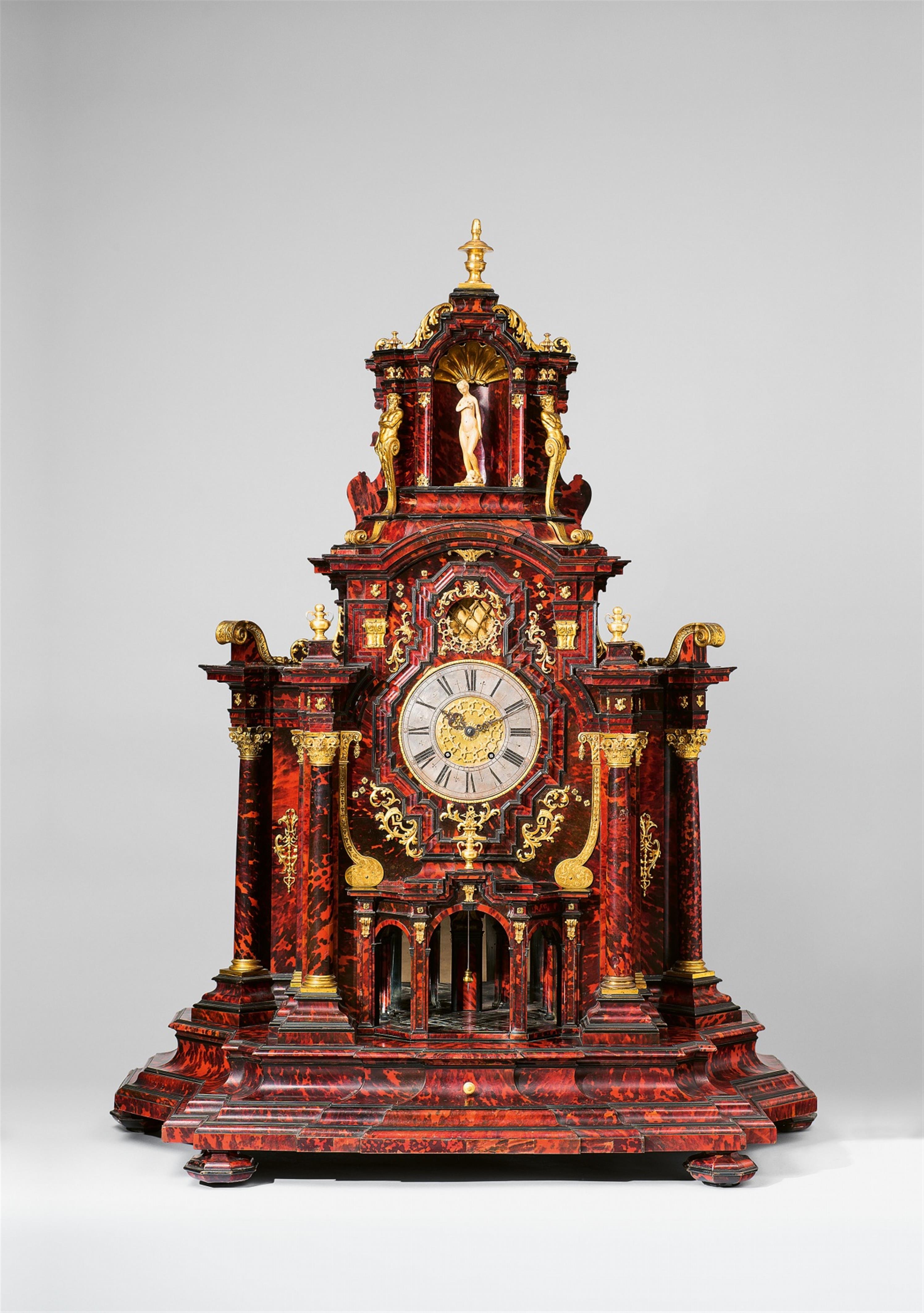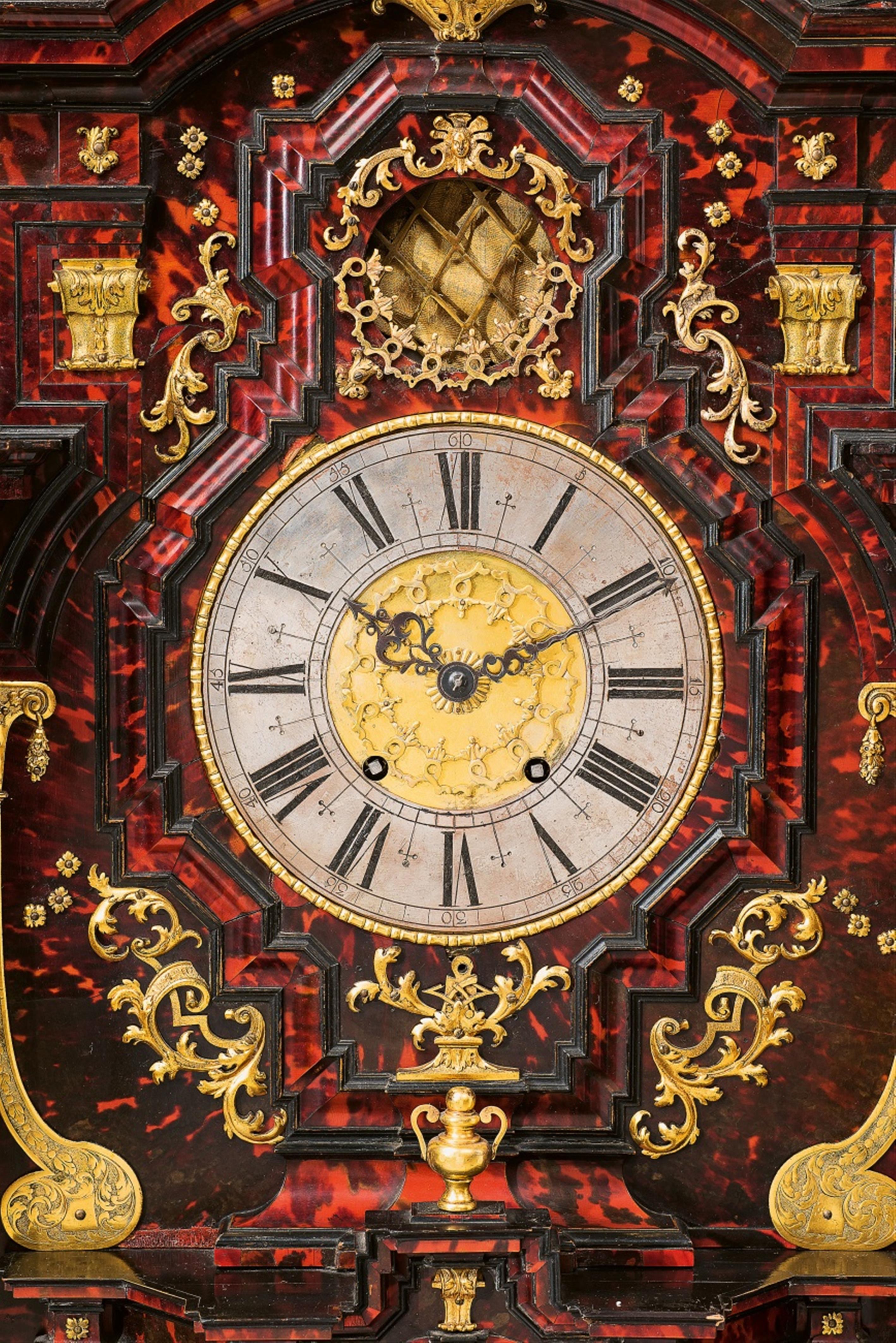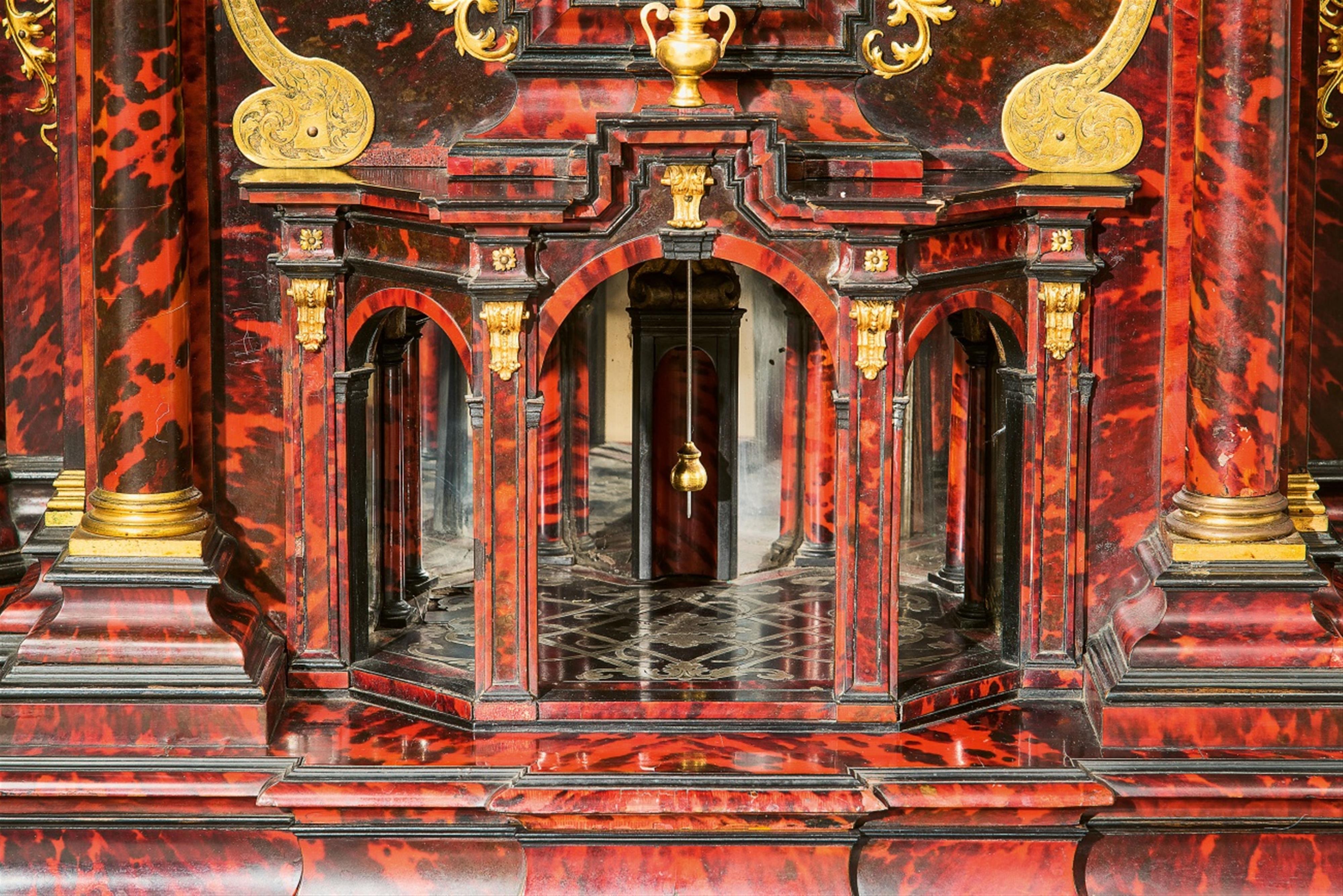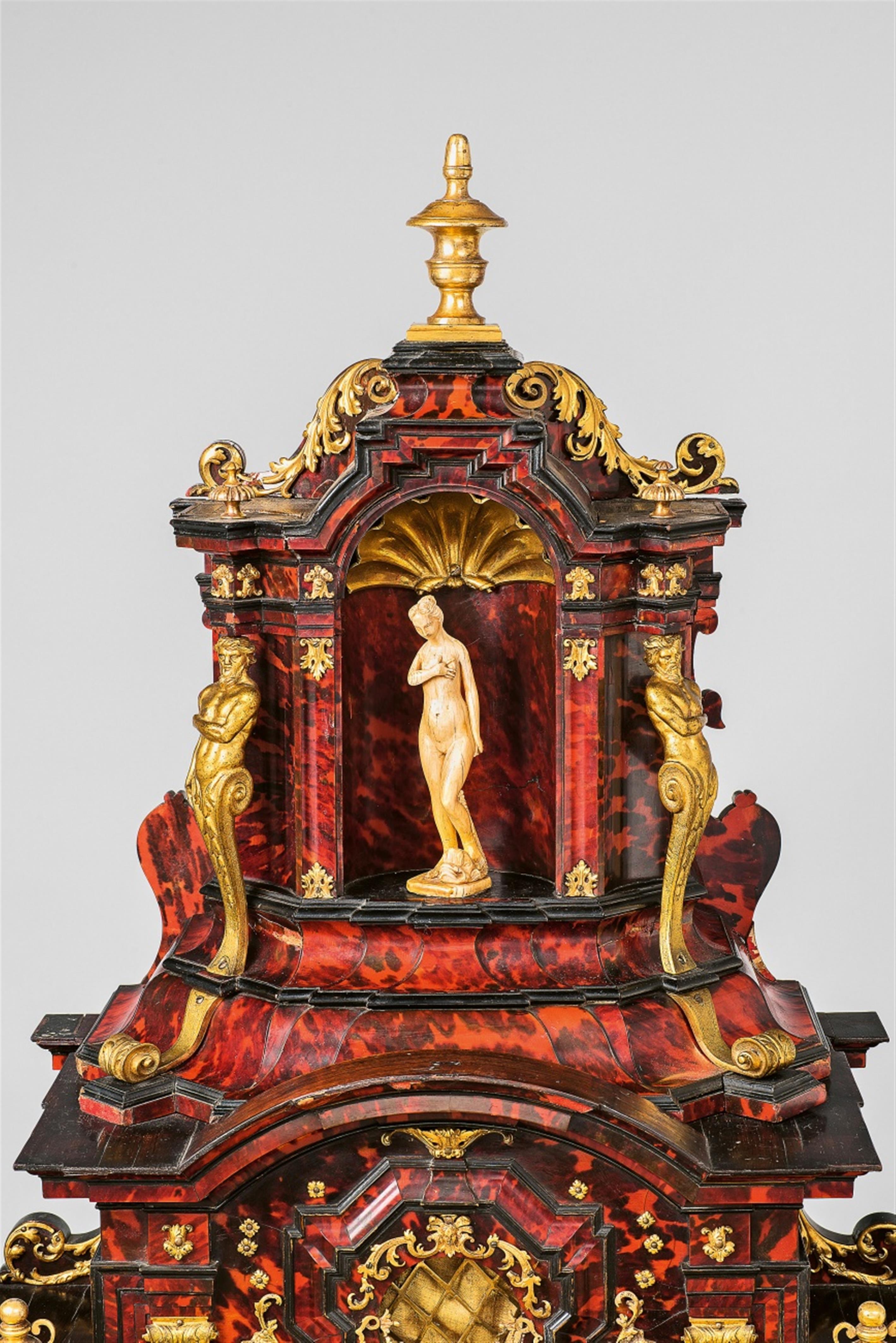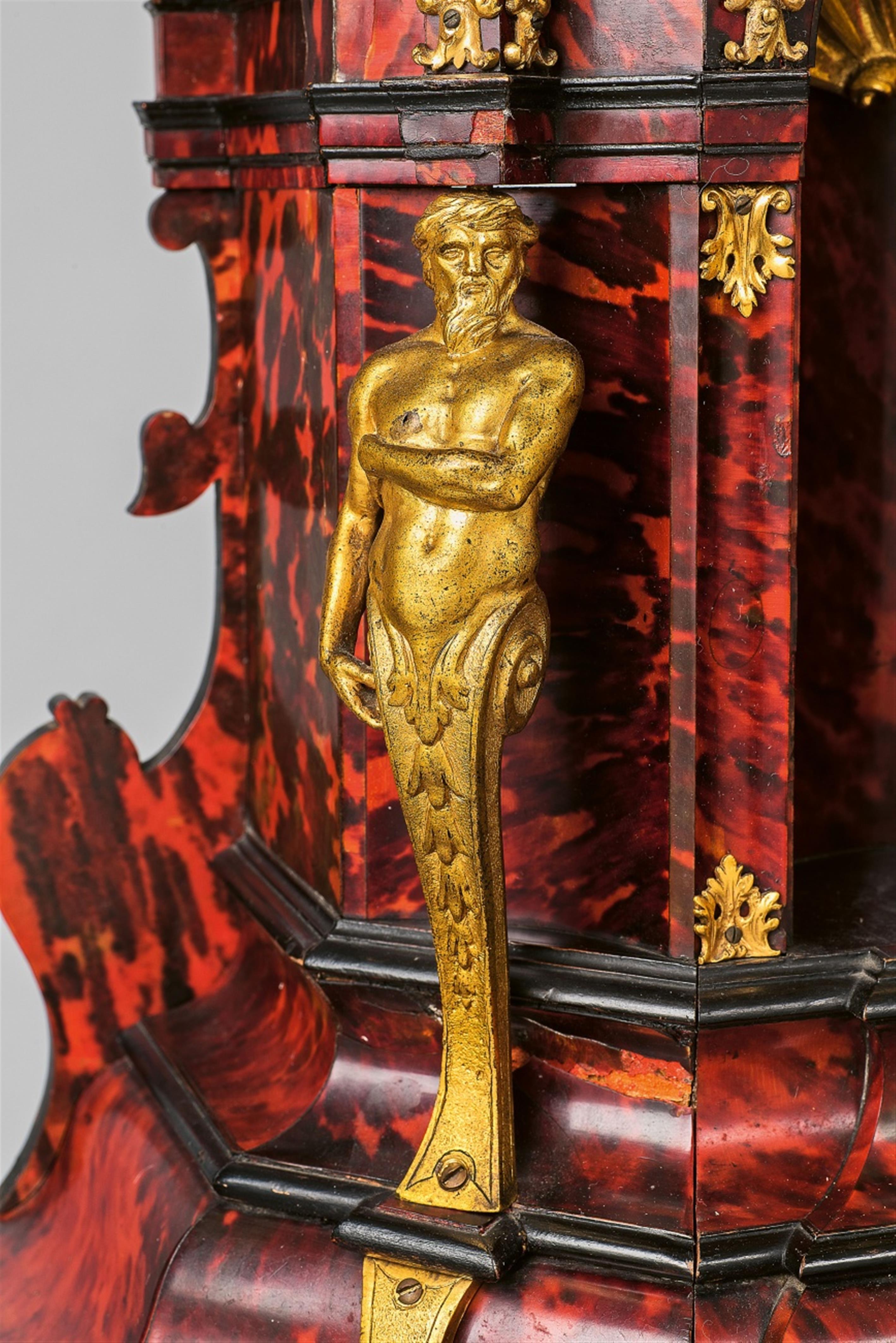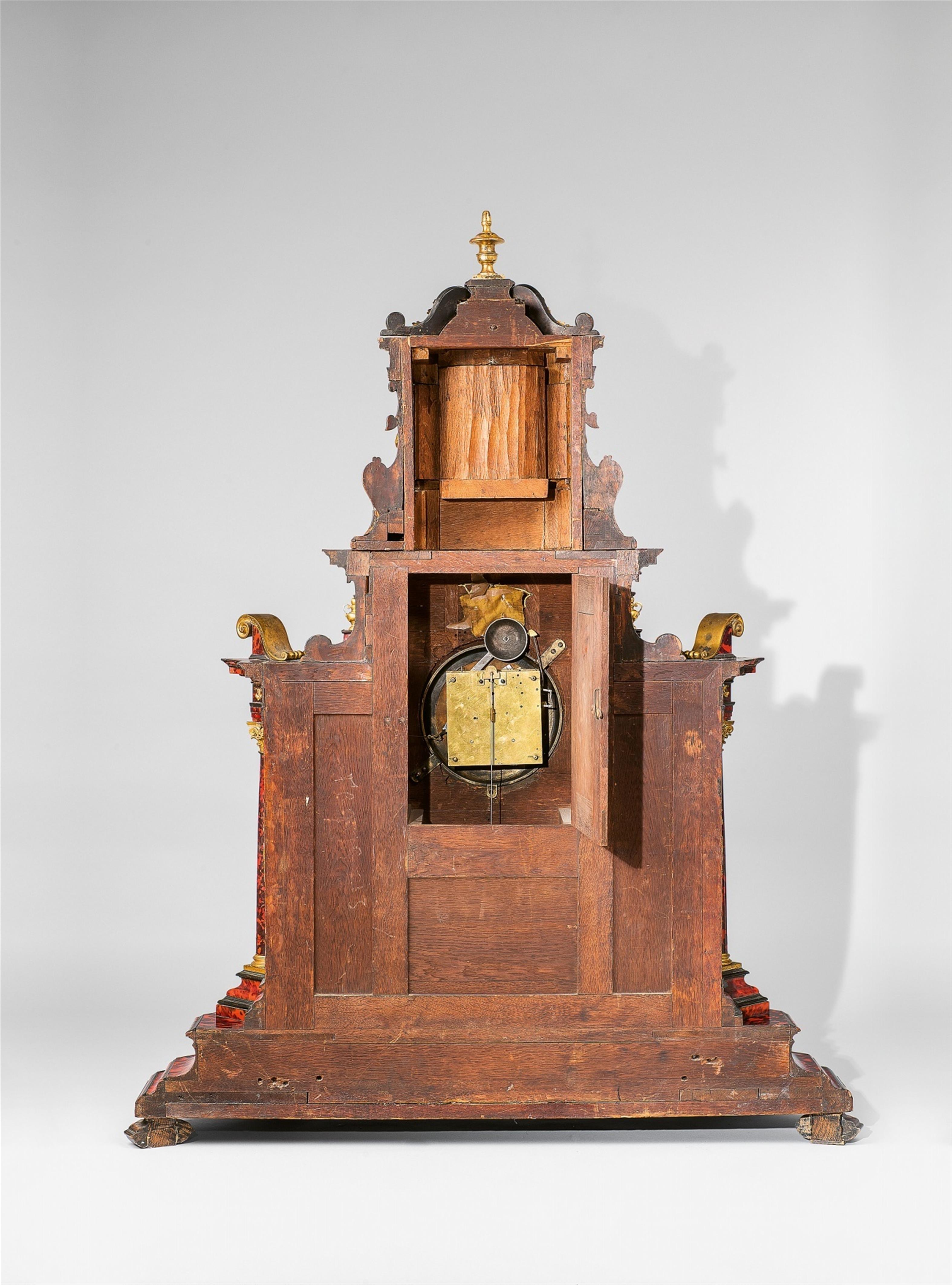A splendid Augsburg tortoiseshell veneer cabinet and clock
Tortoiseshell, palisander, and ebony veneer on oak; ormolu mountings. A large clock designed as a Baroque façade flanked by two columns with removable upper section.
The breakfront plinth with a central drawer rests on four octagonal bun feet. Above this, a mirrored loggia with tin inlay tendrils. The tin dial with large Roman and smaller Arabic numerals. An ivory figure of Venus with a dolphin in the crowning niche, flanked by two herm pilasters.
Richly decorated throughout with ormolu mountings comprising capitals, scrollwork, and palmettes.
The pendulum movement thought to be replaced, with curved baluster columns. Eight-day movement with verge escapement, pear-form pendulum, indirect half-hourly striking and hourly striking to a bell, repetition to one side. Some elements replaced (incl. the bell, the ivory sculpture, the vase final). The dolphin's tail broken. H 135.5, W 106.5, D 44 cm.
Late 17th /early 18th C., attributed to the workshop of Heinrich Eichler the Elder.
This type of large architectural clock superseded the metal case designs used since the Renaissance. The movement was provided by a clockmaker, and the case by a ebenist. This division of labour was highly beneficial to the art industry in 17th century Augsburg. One of the leading proponents of this development was the art dealer Philipp Hainhofer, the inventor of the “Pommersche Kunstschrank”, which was destroyed in the bombing of Berlin in 1945 at the end of WWII.
This large Augsburg architectural clock is designed to be viewed from the front. Thus, the back of the clock is not veneered, as it would have been placed against a wall. However, another similar clock kept in the Landesmuseum Württemberg in Stuttgart, the plate of which is signed by the clockmaker Joseph Anton Schöner of Augsburg, has two functional display sides. The case of this clock corresponds to that of this piece, and is comprised of three sections, a slightly concave base, and freestanding columns supporting a curved pediment. The grotto-like hollow in the front can also be compared to large clock in Rosenborg Palace in Copenhagen.
The two comparison pieces are also veneered in tortoiseshell and opulently mounted in silver and vermeil. After Antwerp, Augsburg was the leading European centre for tortoiseshell veneerwork. The material was costly and difficult to work with, and was usually paired with black ripple mouldings, gilt metal mounts, and matte silver-coloured tin to enhance its opulent effect. Each one of Klaus Maurice's clocks is unique, as he created a new design for each of his royal patrons. However, the producers of both the cases and the movements created many pieces of similar design and value that were highly fashionable at the time and sought-after throughout Europe.
Christine Kowalski published her seminal work on Augsburg architectural clocks in 2011. This work mentioned for the first time the workshop of Heinrich Eichler the Elder, who was responsible for the production of this case type. She based her attribution on an engraving in the graphics collection of the Augsburg Museum depicting a design for an opulent cabinet on stand with a clock, which was inscribed “Henricum Eichler Aug.” Whilst researching the artist in the course of her dissertation, she found archival records of Eichler and his family. These showed that he was born in Liebstadt near Meissen in 1636, and first recorded as a cabinetmaker in Augsburg in 1677. This discovery allowed her to attribute a number of well-known cabinets of this type to his workshop, including one in Rosenburg Palace, one in the St. Petersburg Hermitage, and one in the Victoria and Albert Museum in London.
Few of these sumptuous clocks are in private ownership today, and fewer still are found on the art market.
Literature
Numerous comparable clocks listed in: Maurice, Die deutsche Räderuhr, vol. II, Munich 1976, illus. 709 ff.
Cf. Gaulke/Scherner, Ein Meisterwerk voller Rätsel. Die Augsburger Prunkuhr, Kassel 2007.
Cf. Kowalski, Die Augsburger Prunkkabinette mit Uhr von Heinrich Eichler d.Ä. (1637 - 1719) und seiner Werkstatt, Berlin 2011, no 1.
This design comparable to an Augsburg cabinet made by Johann Georg Esser for the Munich Residence (cat.: Pracht und Zeremoniell, Munich 2002, no. 19).

